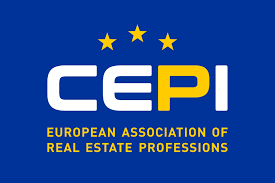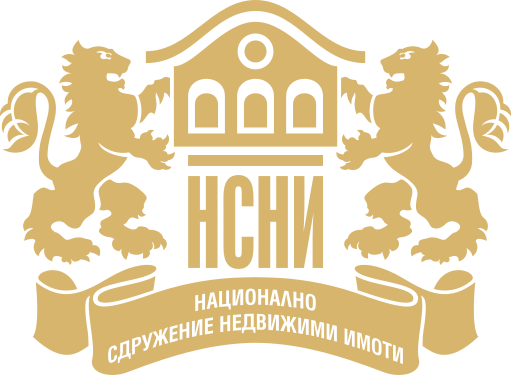South Coast
Elenite
Elenite is a resort village on the Black Sea coast, 10 km north of Sunny Beach and 40 km from Bourgas. It is situated on the southern slope of the Stara Planina mountain range, which protects the resort from the northern winds, thus ensuring a mild and warm microclimate.

Before the construction started in 1985, the area was untouched by man, and in the forests at the foot of the eastern part of the Stara Planina mountain range, there were many deer, hence the name of the resort – Elenite. Until 1993, the Elenite complex, built by Finnish specialists, was a closed club. Thanks to strong investments in 2003, the resort was actively reconstructed and today offers holidaymakers a quiet holiday for the whole family.
Due to the fact that the Stara Planina mountain covers Elenite from the north, the village is reliably protected from cold winds, and the huge amount of greenery, conifers and cacti provides cleaner air and gives the much needed coolness in the hot season.
The resort pleases not only with its natural riches, but also with its modern, developed infrastructure. There is a large beach more than 1 km long, where surfing and other water sports equipment is available for hire.
For the younger guests of Elenite resort, the children’s corner “Aladdin” has been built – a reduced copy of the Sultan’s palace from the fairy tales of Scheherazade. A group of animators works here every day. Each day of entertainment is different from the previous one – it is a Chinese holiday, the day of pirates of the Caribbean Sea, the day of red-skinned Indians. Elenite also has an aqua park
Among the resorts of Bulgaria Elenite takes a worthy place: it has everything necessary for a full-fledged holiday in Bulgaria: a romantic beach, clean sea, restaurants with European and national cuisine, taverns, wine cellar, day and night bars, swimming pools with sea water, tennis courts, yacht club.
Saint Vlas
Saint Vlas is a town located on the Black Sea coast near Sunny Beach. Saint Vlas occupies the northern part of the Bay of Nessebar and is located 10 km from the center of Nessebar.
The unique combination of sea and mountains gives this resort an exceptionally favorable climate. It is untouched by northern winds, so fog is a rare phenomenon and the number of sunny days is 240-260 per year. Warm weather and cool breezes are typical for summer and early autumn.
The natural sea breeze combined with crystal clear air create conditions for sea balneotherapy and have a positive effect on patients with bronchial asthma and other lung diseases. The favorable climate is suitable for treatment all year round.

Saint Vlas is a famous international tourist center. Every year tourists from all over the world visit this resort and take with them unforgettable memories of a pleasant holiday in Bulgaria.
The whole coast of Saint Vlas is a natural Riviera. The beaches are wide, clean, covered with fine golden sand. The coast is divided into three separate beaches. The largest is the central beach, which is about 1000 metres long and about 16 meters wide.
Saint Vlas is one of the fastest growing and picturesque resorts on the Bulgarian Black Sea coast. Situated far away from large administrative center, today Saint Vlas is a popular holiday destination for both young people and families with children. There are plenty of opportunities to spend your free time here – water sports, sailing, sea and mountain walks, cycling, hiking routes
Holidays in Saint Vlas allow you to enjoy all the advantages of the new infrastructure without the inevitable noise and crowding of the big resorts. Bus connections are well established and it is easy to combine a tour to Saint Vlas with a visit to Nessebar and Sunny Beach.
Sunny Beach
Sunny Beach is the largest international resort in Bulgaria. Sunny Beach is the Pearl of Bulgaria, a resort where a holiday atmosphere reigns and life is painted with all the colors of the rainbow. The golden beach spit, the bay open to the east, the sand dunes are located 35 km from Burgas and about 100 kilometers from Varna airport.
The calm sea, the light sea breeze, the clean air of Sunny Beach enchant forever.
In the northern part of the resort Sunny Beach closes the last elevations of the Stara Planina mountain massif, which creates a magnificent harmony of the combination of sea and mountains. In its southern part is the ancient town of Nessebar, an architectural and historical monument of Bulgarian and world culture, situated on a peninsula. Nowadays Nessebar is under the aegis of UNESCO and is included in the list of world cultural heritage. Only eleven of the 42 Byzantine churches on this tiny peninsula have survived (two of which date back to the end of the 4th and beginning of the 5th centuries).

Sunny Beach is located on the shore of the bay, in the form of a semicircle facing East. The beach of the Sunny Beach resort stretches for almost 9 kilometres and is covered with the purest fine sand, in some places forming picturesque dunes. Sunny Beach has been awarded the authoritative international Blue Flag symbol for the cleanliness of the beach and the sea.
Sunny Beach is a great place for holidays with children. A calm shallow bay with a gentle bottom is complemented by several swimming pools for children, fenced areas with swings, slides and other play structures, fun games and competitions with prizes, children’s discos, sports schools. The beach with fine golden sand is 30 to 60 meters wide.
The climate on Sunny Beach is close to the Mediterranean. In the summer season there are about 1700 hours of sunshine from May to October. The average summer air temperature is around +28°C and the average water temperature is +24°C. The unique combination of perennial broad-leaved and coniferous vegetation and warm sea water is a prerequisite for the resort guests to spend their holidays in a healthy environment.
The waters of the Black Sea are ideal for swimming and diving, there are no dangerous fish and animals, nor tides. Sunny Beach is also a medical and health resort that offers its guests a variety of treatment, beauty and health programs.
Nessebar
The resort town of Nessebar is situated on a rocky peninsula 850 m long and 300 m wide, 37 km north of the town of Bourgas, 2 km from the resort of Sunny Beach.
Nessebar consists of two parts – the “old” (included in the List of World Cultural and Natural Heritage under the protection of UNESCO), an exceptionally beautiful place that has preserved the history of the Thracians, ancient Greeks and Romans, and the “new”, located on the mainland.
The greatest wealth of Nessebar are numerous churches, medieval architectural monuments: the old metropolis in the early Byzantine style (IV-V centuries), the church of St. Stephen (new metropolis) with valuable frescoes of the XII century, the churches of Christ Pantokrator and John Aliturgetos (XIII-XIV centuries) – with rich architectural decoration of white stone blocks, red bricks and multicolored glazed ceramics.

Nessebar – as a holiday destination, allows you to combine the sea and the beach with the opportunities offered by city life – museums, architecture, service, communications.
New Nessebar is ideally adapted for a comfortable and quiet holiday. Most of the modern houses and hotels adjacent to the Sunny Beach resort are located here. In both parts of the town there are many cafes and restaurants, bars and discos.
Pomorie
Pomorie is a resort located on a peninsula extending five kilometers into the sea. The peninsula is 18 kilometers northeast of Bourgas and 408 kilometers east of Sofia.
The ancient name of the town is Anhialo and it originated in the 5th century BC as an ancient Greek colony. In 1934 the name of the town was changed to Pomorie.
Pomorie has been known since ancient times for its therapeutic mud (liman), mineral water, iron sand. After the unique therapeutic qualities of mud were proved, the first mud cure center was built here in 1902. Diseases of the musculoskeletal apparatus, sciatica, rheumatism, sciatica, lumbago, hernia, etc. are treated.
Nowadays Pomorie is a national sea balneological center.

From the land Pomorie is surrounded by salt lakes, in many of which sea salt is extracted. From the north, part of the sea is cut off from the peninsula by a long spit, forming Lake Pomorie. Pomorie Lake has a continuation on the peninsula itself – the Small Salt Lake. Just between these two lakes are the famous Pomorie sanatoriums.
Due to its convenient location, flat terrain, the availability of inexpensive private accommodation for the summer and the shallow, clean sea, Pomorie is ideal for families with small children.
It is the sunniest place on the Bulgarian Black Sea coast. The air temperature in summer is 25-33 degrees Celsius and the water temperature is 24-30 degrees Celsius. In 1999 the resort was awarded the Blue Flag.
Since 2004 Pomorie has been hosting the annual International Orthodox Music Festival, which brings together choir groups from Bulgaria, Russia, Serbia, Georgia and other countries.
The town is also famous for the Black Sea Gold wine and brandy factory located on the outskirts of the town.
Architecture and art lovers will be interested in the churches of Transfiguration of Christ (XVII-XIX centuries with valuable iconostasis and icons) and Assumption of the Virgin Mary (XIX century), as well as the Pomorie Monastery of St. George the Victorious with the preserved stone relief of St. George.
Бургас
Burgas is located in Eastern Bulgaria and is the largest city on the southern Black Sea coast and the fourth most populous city in the country after Sofia, Plovdiv and Varna.
Burgas was originally the site of the Roman settlement of Kulata, later the town of Deultum. In the Middle Ages a small fortress Pirgos was built here and only in the XVI century Bourgas received its present name. In the Turkish register of 1676 on military supplies for the Turkish army the name of the settlement is recorded as the town of Burgas, and since 1730 it has been listed as the port of Burgas.
The beach strip in the Burgas area reaches 100 meters, and there are a large number of fresh and salt water lakes in its vicinity. The three largest lakes are lagoons formed due to the low position of the coast. These are the Atanasovsko, Burgas and Madren lakes. Their sediments are used in mud and balneological centers.

The central beach is located under the sea garden and can be reached by a beautiful and branched staircase covered with greenery. The sand has a lot of magnetite impurities, so it is dark. There is also the North Beach, near the Izgrev neighborhood, near the saltworks.
There are many restaurants, bars, pizzerias, national institutions in Burgas, where you can enjoy the wonderful atmosphere, hospitality and taste a variety of Bulgarian and European cuisine.
One of the most famous attractions of Burgas is the Marine Park, which stretches for 7 kilometers along the sea. The park is decorated with many modern sculptures and monuments. There is a Summer Open Theatre with a capacity of about 2500 people. During the summer season, various theatrical productions can be seen in the theatre. There are also festivals, modern and folk music evenings.
The City History Museum has a collection of old photographs with views of the old beach and architecture of the city. The Ethnographic Museum has a curious collection of masks, costumes characteristic of the region and everyday objects.
The Art Gallery of Burgas, founded in 1945, has an interesting collection of works by foreign and Bulgarian painters, as well as icons from the Bulgarian National Revival.
Also in Burgas you can visit the Church of St Cyril and Methodius and a small Armenian church. Both buildings date back to the 19th century. The Church of St Cyril and Methodius is famous for its beautiful paintings and altar.
Sozopol
The town of Sozopol is a small harbor town located 33 km south of Bourgas.
It is one of the oldest Greek settlements on the shores of the Black Sea. Once there was an ancient Greek colony here, known as “Apollonia Pontica”, which was named in honour of Apollo, the patron saint of seafarers. Today’s town is a scattering of garden houses from the end of the last century.
Sozopol is divided into two parts: the old town, located on the peninsula, and the new town (it is called Harmanit, because of the abundance of mills – “Harmans”, of which only one has survived to this day). The old and new parts of the town are separated by a green park with churches.
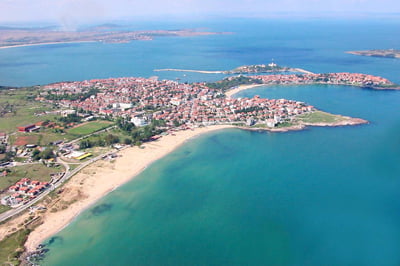
The old part of the city is an architectural reserve. For many decades the narrow and steep streets of Sozopol, its old wooden houses with bay windows have attracted artists and writers.
Not far from Sozopol there is an archaeological museum, where you can see perhaps the richest collection of Greek vases. The Church of the Holy Virgin and the local art gallery are also worthy of a visit.
To the south of Sozopol are some of the most beautiful Black Sea beaches with fine golden sand, some of which are completely deserted in summer.
Not far from Sozopol there are several unique nature reserves, such as the Ropotamo and Liliite National Park, located in the delta of the Ropotamo River. It is home to many different species of fish and birds, and there is no better place for a leisurely stroll under the shade of weeping willows.
The caves of Maslen Cape in the lower reaches of the river, where it flows into the sea, are famous for the frequent sightings of dolphins and seals. The Snake Island Nature Reserve is also interesting, where you can see not only many reptiles, but also various species of wild cacti.
Ravda
Ravda is located 3 km south of the town of Nessebar. From Nessebar to Ravda you can walk along the beach.
Ravda is known first of all as a youth and children’s resort with a rich sport base. Surfing, swimming, rowing, water skiing – only a small part of all the entertainment you will find here.
On the outskirts of Ravda there are gourds and vineyards; here you can buy fresh watermelons and melons, various vegetables and fruits directly from the producer.
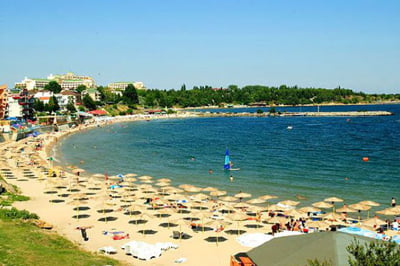
Ravda this season is one of the most promising places for large investments in the hotel business, as it is the closest point after Nessebar to the Sunny Beach resort; there is an active construction of expensive hotels and restaurants. During the holiday season, surfing, diving and windsurfing courses are available for holidaymakers. A large water park with various water slides and attractions has recently been built.
You can dine in Ravda resort in one of the restaurants, “mekhanas” or beer restaurants, which offer their visitors to taste wonderful Bulgarian and international cuisine. There is a very large choice of fish and seafood dishes. If you prefer to cook on your own, you will not have any problems with groceries in Ravda: there are many shops, a food market and a small supermarket in the village. You can buy groceries at very low prices in the villages around the resort. In the central part of the village there is a polyclinic, fitness centre, library, post office.
In the evenings there are 3 discos, the most famous of which is the Varvari Disco. Those who want additional impressions and entertainment can go to Nessebar (1 km) or Sunny Beach (4 km). There you will find everything that is missing in Ravda: from large supermarkets to nightclubs and variety shows.
Китен
Китен – курортный городок, расположенный на юге черноморского побережья в 70 км от аэропорта г. Бургас.
Как туристический центр Китен начал развиваться только во второй половине XX века. Небольшая деревня превратилась в симпатичный курортный городок. С 1962г. Китен называют национальной здравницей.
Мягкость климата в Китене обусловлена уникальным сочетанием горного и морского воздуха. Средняя температура летом колеблется от +25 С до +33 С, а температура воды – от +22 С до +28 С. Кроме того, отсутствие вблизи курорта промышленных предприятий обуславливает чистоту и красоту курорта.

Китен расположен на глубоко вдающемся в море полуострове, по обе стороны которого образуются прекрасные заливы, окаймленные зеленью. Золотистые песчаные полосы обоих пляжей широкие, а море мелкое, чистое, теплое с пологим дном.
Китен привлекает необычайной гостеприимностью, душевной демократичной весёлой атмосферой и конечно необычайно низкими ценами на размещение, развлечения и питание. Неслучайно Китен так популярен у болгарских туристов. Здесь рай для экономного семейного отдыха, для молодёжи и студентов, для тех, кто хочет провести каникулы на море.
Водные аттракционы не дадут скучать на пляже днем, а вечером можно хорошо провести время на дискотеках и в Луна-парке.
К услугам отдыхающих на курорте Китен – уютные заведения с разнообразной болгарской, турецкой, греческой и русской кухней, с национальными фольклорными программами, множество ночных баров, ресторанов и дискотек, спортивные комплексы и фитнес-центр, открытые и закрытые бассейны, экскурсионная программа, удовлетворяющая различные интересы.
Приморско
Приморско – курорт на берегу Черного Моря, находится в 55 км к югу от Бургаса, 15 км севернее г. Царево и расположен на скалистом полуострове Кюприя, в горах Странджа.
Странджанские горы, спускаются к самому морскому берегу, создавая живописные заливы и причудливые скальные образования, а лесные массивы наполнят чудесными ароматами воздух курорта и способствуют оздоровлению отдыхающих.
За последние пять лет в городе построено много современных больших и малых гостиничных комплексов с бассейнами. Для экономных туристов возможно размещение в частных коттеджах недалеко от моря.

С обеих сторон полуострова, на котором располагается курорт Приморско, находится два пляжа с кристально чистой водой, спокойным морем и мелким золотистым песком. Пляжи с общей длиной около 8 км заканчиваются дубовыми лесами.
Отличительной особенностью курорта является чрезвычайно широкий выбор возможностей для активного отдыха. Для многих людей Приморско становится излюбленным местом отдыха, благодаря своей демократичной и гостеприимной обстановке. Курорт предоставляет широкие возможности для любителей различных видов спорта и фитнеса: волейбольные и футбольные площадки, закрытый зал для настольного тенниса, теннисные корты, бильярд, фитнес-центр, разнообразные бассейны. В последнее время Приморско облюбовали любители кайтинга и серфинга.
В километре от Приморско, в стороне от населенных пунктов, находится Международный молодежный центр – самый крупный молодежный центр в Европе, всемирно известный морской курорт с Домом культуры и Летним театром, стадионом, бассейнами и спортивными сооружениями, привлекающий ежегодно более 70 000 юношей и девушек со всего мира.
Окрестности города Приморско богаты природной красотой: там находятся река Ропотамо, водяные лилии Аркутина, долмены, скальный феномен Львиная голова, Змейский остров, Тракийское святилище, скальные берега у Кроноса и Мириуса. Залив Приморско – прекрасное место, предлагающее богатые возможности для подводной рыбалки.
Лозенец
Лозенец – курорт в южной части Черноморского побережья Болгарии, расположен в 60 км от Бургаса и, менее чем в 30 км от границы с Турцией.
Лозенец основан в 1924 г. как место для отдыха жителей соседнего села Велика. Первоначально село носило имя Емберли – по имени известного сорта винограда, а позже переименовано в Лозенец. Это типично рыбацкое село, обеспечивающее свежей рыбой и рыбными деликатесами местные рестораны.
Лозенец окружен несколькими живописными реками, по берегам которых процветает густая растительность, а низкие и пологие холмы горы Странджа, поросшие вековым дубовым лесом, плавно спускаются к самому морю. Красивые пляжи курорта привлекают даже самых взыскательных туристов своей кристально чистой морской водой и мелким золотистым песком. Для любителей уединенных уголков, Лозенец предлагает несколько безлюдных пляжей, окруженных красивыми причудливыми скалами.
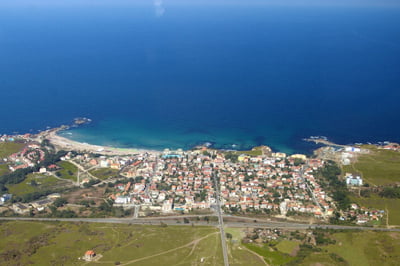
Курорт имеет отличный климат – морские бризы, приятный прохладный воздух, ароматные сосновые леса, расположенные на протяжении черноморского побережья.
В последние годы Лозенец является быстро развивающимся курортом с хорошей инфраструктурной, отличными гостиницами, апартаментными комплексами, ресторанами с вкусными национальными блюдами, диско-клубами, кафетериями, пиццериями и т.д. В этом месте сочетается уникальная комбинация моря, рек и гор, с их экзотичной растительностью и разнообразием животных видов.
В культурной программе курорта во время всего сезона присутствуют профессиональные и самодеятельные концерты, состязания, ежегодная фотофиеста, экскурсии к интересным туристическим объектам.
Царево
Царево расположен в небольшом заливе Черного моря, в 65 км к югу от города Бургас.
В последнее время регион Царево активно развивается, причем не в ущерб экологии. Болгарское правительство озаботилось сохранением природы и ввела жесткие рамки застройки в такого рода местах.
Курорт Царево расположен на двух полуостровах (северном и южном) и имеет три лазурных пляжа. В 1967 г. город был объявлен климатическим морским курортом. Помимо трех пляжей в Царево находятся и два экзотических кемпинга – Болгарка и Нестинарка.

Уникальное сочетание моря, горы и реки, экзотической флоры и фауны, вместе с традициями и аутентичной странджанской культурой и обычаями, предоставляют разнообразные возможности для развития туризма – экотуризм, прогулки на яхте, рыбалка и др.
Царево славится своими историческими памятниками – античной Ахтопольской стеной и Греческой школой в г. Ахтополь, церквями Св. Успение Богородицы в г. Царево, Св. Св. Кирилл и Мефодий в с. Кости, Св. Пантелеймон в с. Бродилово, фракийскими руинами и др.
На территории района находится самый древний заповедник в стране – Силкосия. Здесь находится одно из семи влажных мест в стране с континентальным значением – комплекс Ропотамо-Велека.

